Land Management for Pearl-Bordered Fritillary Butterfly
29 August 2023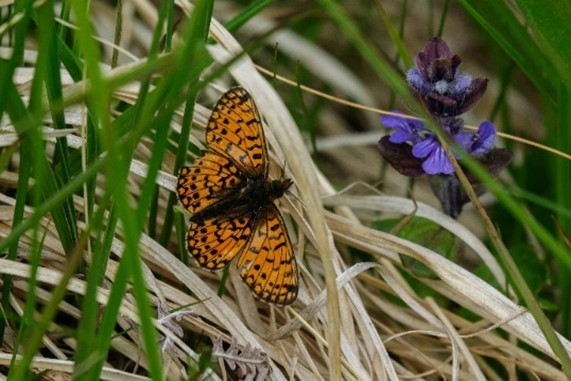
Status of the Pearl-bordered Fritillary in the UK
The Pearl-bordered Fritillary Butterfly (Boloria Euphrosyne) is on the Scottish Biodiversity list and is a UK BAP Priority species. Once very widespread across Britain, the Pearl-bordered Fritillary is a declining species and occurs only in Scotland and in a few northern locations of England. Its distribution has contracted by 95% since the 1970’s which is why it is a species of High priority for Butterfly Conservation.
Identification and Similar Species
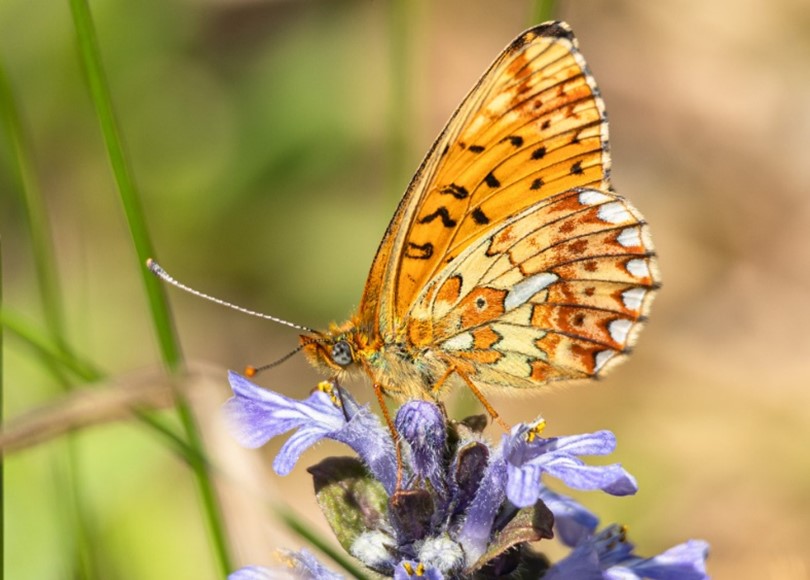
One of the earliest fritillaries on the wing appearing as early as April near woodland and rough hillsides with bracken. Pearl Bordered is one of four fritillaries found in the UK and very similar to the more common Small Pearl bordered Fritillary. Pearl bordered can be distinguished from the Small Pearl-bordered by looking at the underside of the wings. Two large silver 'pearls' and a row of seven outer 'pearls' on the underside hind wing, and also the red (as opposed to black) chevrons around the outer pearls along with the small central spot on the hind wing.
Life Cycle and Habitat Requirements
In Scotland the Pearl-bordered fritillary is a butterfly often found near woodland but also on open hill where bracken is present. It requires sunny, sheltered sites, which are south-facing. They require light bracken cover, that is bracken which is open enough to support vegetation and flowers underneath the canopy. The dead bracken is required because it heats up in the spring sunshine and provides a vital warm microclimate around, and under light bracken.
The butterflies have an annual life-cycle, appearing as flying adults in May until Mid June. The adults lay their eggs often on the bracken but always near the violets on which the caterpillars feed. The eggs hatch within a couple of weeks so these butterflies spend most of their life as caterpillars. In September they hibernate under the bracken litter emerging in March to soak up the sun’s rays on the sheltered bracken litter where they pupate and emerge as adults again in May. As adults they feed at nectar plants, especially bugle, dandelion, bluebell (wild hyacinth) and bird’s-foot trefoil.
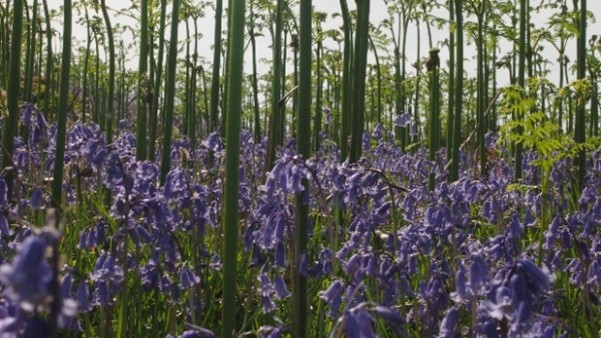
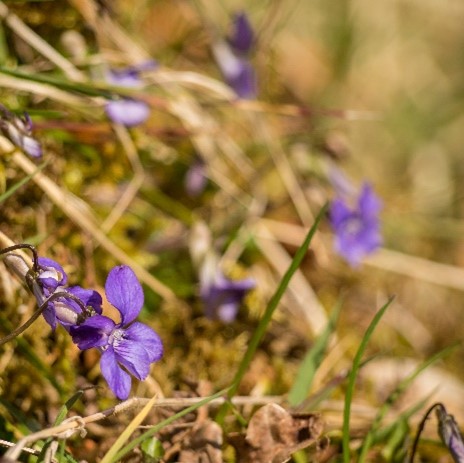
Management to Benefit the Pearl-bordered Fritillary
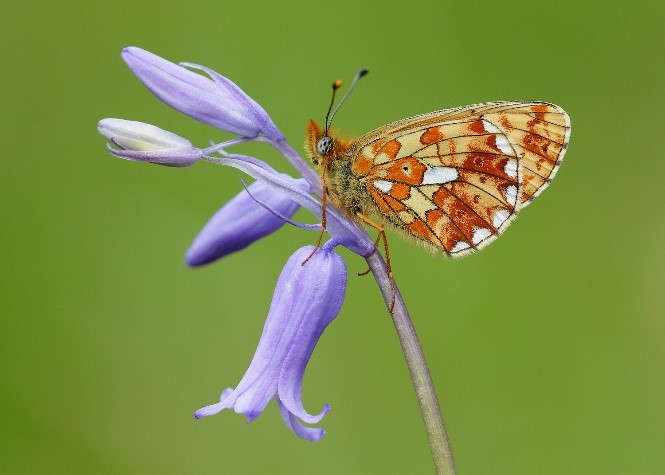
Site: The ideal site for Pearl Bordered is a flower rich sheltered south facing slope with light bracken.
Grazing: In terms of managing habitat for pearl-bordered fritillary light cattle grazing is best. Trampling by cattle helps to prevent bracken from spreading and becoming too dominant, as well as providing suitable ground conditions for the establishment of violets and other flowers on which the adults feed. Without grazing bracken management is required to prevent the bracken becoming too dense and maintaining the diversity of flowers. On hill sites grazing by deer is sometimes sufficient without the need for additional cattle.
Woodlands: Rides and paths running east to west in woodlands have a greater proportion of warmer south-facing edges and the inclusion of scalloped bays along the south-facing edge can provide additional sheltered habitat. Cutting or grazing of regrowth on wayleaves provides suitable sheltered and open habitat, and their linear nature means they provide ideal corridors along which individuals can fly to neighbouring colonies.
Fragmentation: Fragmentation of populations can be a problem with butterflies only travelling between 1-5km. The aim should be to ensure there are connected areas of suitable habitat to ensure butterfly dispersal between colonies.
Key Messages
- A sheltered south facing slope with light bracken is key
- Grazing is important to prevent bracken spreading or becoming too dense.
- On sites without grazing bracken control is important.
- Maintain connected open space within woodlands to allow populations to move and expand.
Further Sources of Information
Sign up to the FAS newsletter
Receive updates on news, events and publications from Scotland’s Farm Advisory Service
